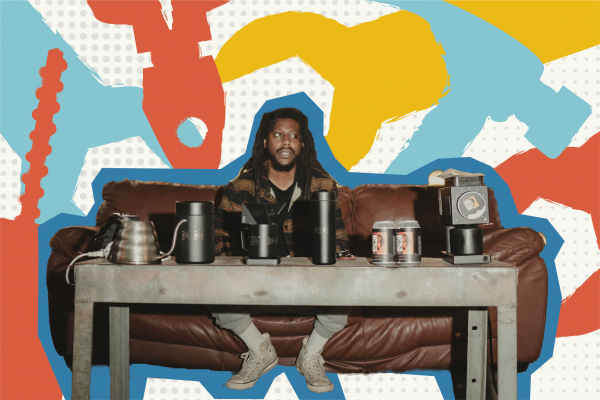As we near the third year of the pandemic, our daily prayer group — a stalwart band of intercessors — gathers faithfully each morning on our church’s Zoom account. On Sundays, we see Monika and her newborn baby on the screen as we sing. Other families with grandchildren and children under the age of 5 have also decided to remain with us virtually until a vaccine is available for their young loved ones as this age group floods hospitals around the country.
I’m grateful that Jane, the oldest member of our church, can join us even though getting out and about is difficult for her right now. Her daughter and son-in-law join her from the same Zoom screen. Wallace, who is blind and getting along in years, now joins us every week. For years he would faithfully read the bulletin through his adaptive software and listen to my sermons. Now Wallace can share prayer concerns, sing along with the hymns, and participate in our litanies. Other people in our church — including those struggling with paralyzing depression or haunted by anxiety from a previous church trauma — can muster just enough strength to join us on Zoom.
I remember our first week of Zoom worship, the crash into the isolation of a virtual wilderness. We were disoriented and afraid. Along the way, we found that God met us there, quarantined in our homes, frightened about the future as we wiped down our groceries with bleach spray. Late in the summer of 2021, the church I pastor finally returned to in-person worship as the percent positive rate fell below the level of community spread. What would become of our Zoom community?
It was a difficult question to answer because Raleigh Mennonite bloomed under the access granted by our virtual Zoom space. We became a place where Mennonites who ended up in places with no Mennonite church could worship, often as their “second church.” From time to time, LGBTQ folks would join us from a rural or suburban town. They’d heard our church was a safe place for them. The churches around them couldn’t offer that welcome, and we were happy to provide harbor and respite.
When I asked members of our worship commission what they thought the future of hybrid church might be for us, Rosene wisely reminded us that there are many aging people in our congregation. Before we didn’t have the capacity or technology to continue to include these older adults and disabled people in our regular Sunday worship. What a gift that now we could!
Like Tish Harrison Warren, a priest in the Anglican Church in North America, a conservative denomination that split from the Episcopal Church in the United States, I care deeply about the embodied experience of people physically distant from the place where some of us gather for in-person worship. The people who utilize Zoom worship do, too. They would love to be near children running across the sanctuary and to feel the bass line hum in the air. They would prefer if dementia, Parkinson’s disease, and compromised immune systems didn’t keep them from pressing their palm into the hand of another or bringing a piece of bread from a common loaf to their lips.
In the bodies we are, however, that isn’t possible. Rather than shutting down our Zoom option, our worship commission met to discuss how we can creatively and intentionally deepen participation and fleshy community among those who are separated from localized worship and fellowship. We decided to have one of the weekly scripture passages read by someone on Zoom. We’ve asked some families to prepare special music, sung from their living rooms. We continue to invite everyone to participate in our corporate discernment of scripture after the sermon is preached.
We’re looking for ways to create small groups in areas where multiple people are Zooming in together. Maybe one day these gatherings will blossom into their own church. To stay connected, we visit one another, sometimes traveling three or more hours away. We’ve delivered Advent wreaths and meals, and, at one point, even a dance party on the front lawn of a few lucky church attenders. We’re finding that the new rhythm of community offers opportunities for us to think about what we all need to overcome loneliness and isolation.
I have no doubt that some people will see Zoom worship as a way to sleep in on a Sunday or to consume worship without engagement. I also know that long before online worship, church attenders had a variety of consumeristic reasons for attending worship, from gaining social capital to their attachment to historic buildings. I’ve witnessed both, and though my frustration is legitimate, it’s not my job to police why people come to church. The Holy Spirit frequently works in ways I cannot comprehend.
I have also worried that hybrid church might discourage people from showing up as they are — in pajamas, with depression, frazzled, and late. I didn’t want a Zoom option to lead people to think that their bodies weren’t welcome in church unless they had it together. I remember multiple Sundays when I unloaded my children from the van into the church parking lot only to discover at least one didn’t have a pair of shoes. Into church we went. There was a grace to that messy discombobulation.
It turns out my fears were unwarranted. Instead, Zoom church helped us make more space to tenderly hold the wounds and gifts of our lives. Now we welcome the fullness of Wallace and we can keep an infant child and her mother safe during a pandemic. Now they are here with us. We are remembered to one another. In the presence of people separated from in-person worship, I have come to see Zoom church as its own sacrament, the heartache of separation present with us as we work to find the good news with the bodies we have.
I think of this as I hold up a sliver of bread and a chalice of grape juice one Sunday a month. In the Mennonite church the epiclesis — the calling down of the Spirit — falls upon the people as they receive the elements. “Send your Spirit upon us.” Now in our hybrid worship, I sense the breath of these words, how they move across time and space. We worship with people in an assisted living facility 10 miles up the road and with a house painter who needs to work every weekend to make ends meet. The Spirit descends on a communion of saints whose faithful witness stretched through time and meets us here. We are bound in the same Spirit with a global church, worshippers in living rooms in China and cathedrals in Spain. We participate in the eternal chorus of heavenly creatures who sing forever “Holy, holy, holy, the Lord God the Almighty, who was and is and is to come” (Revelation 4:8b).
Got something to say about what you're reading? We value your feedback!







